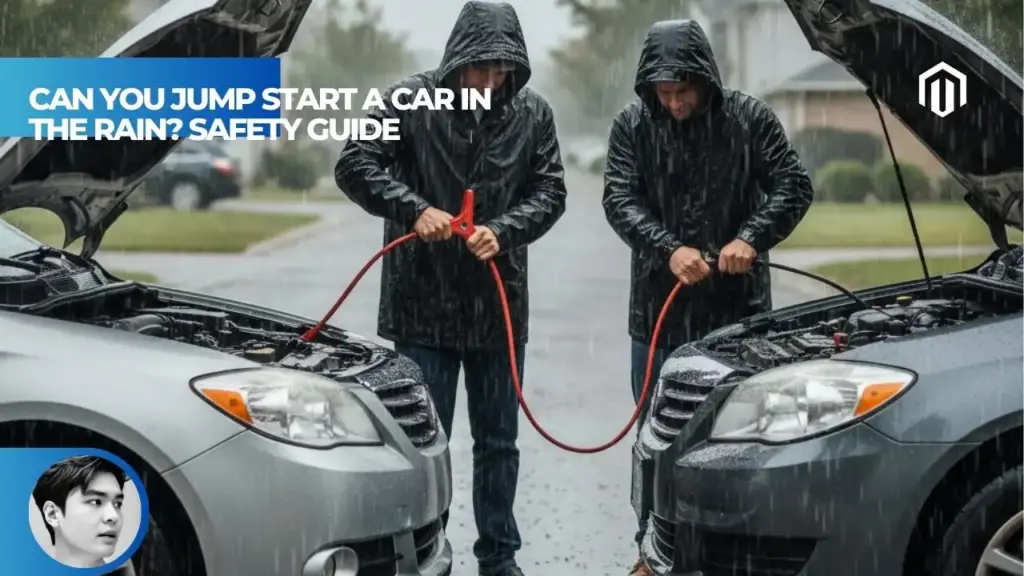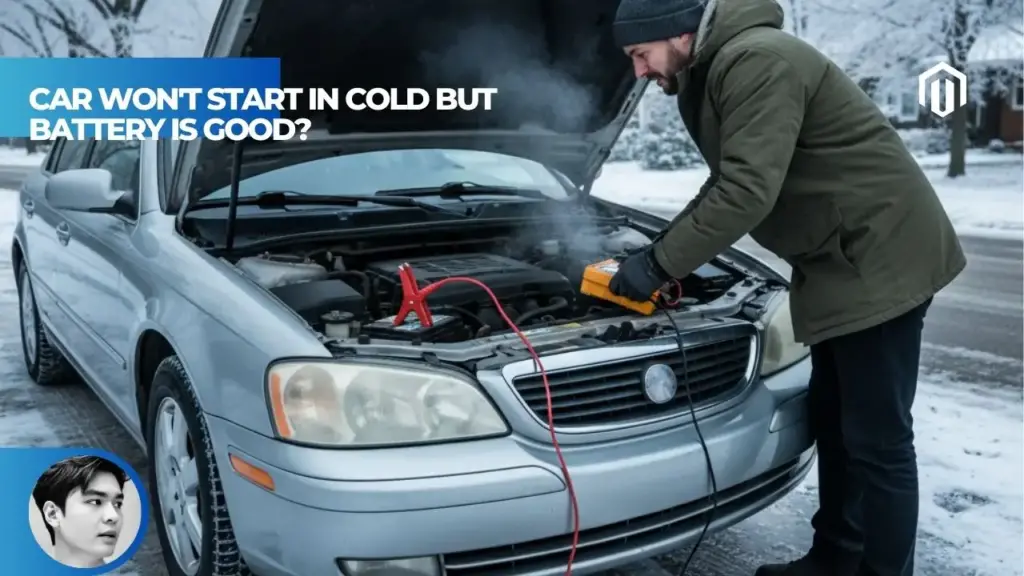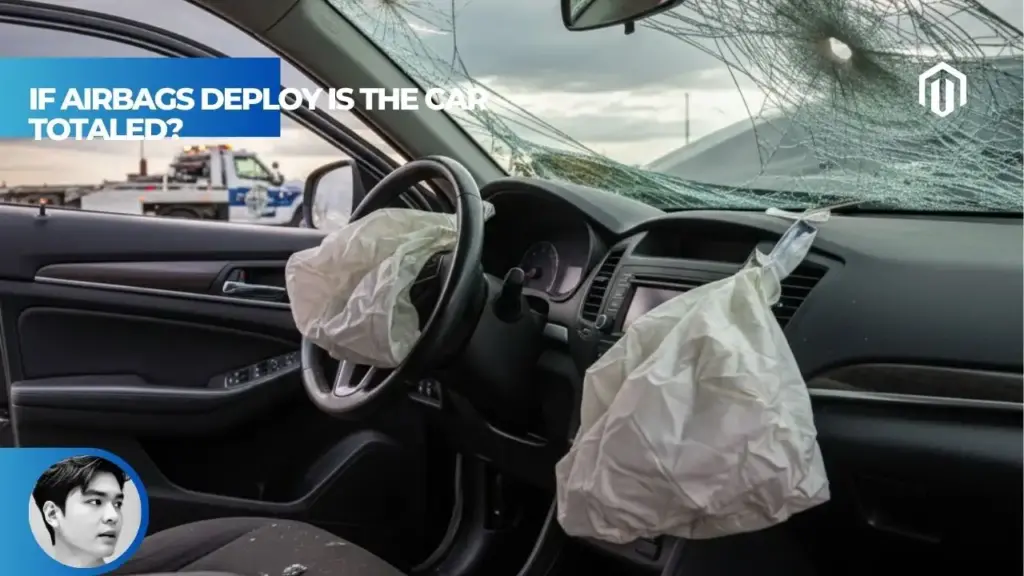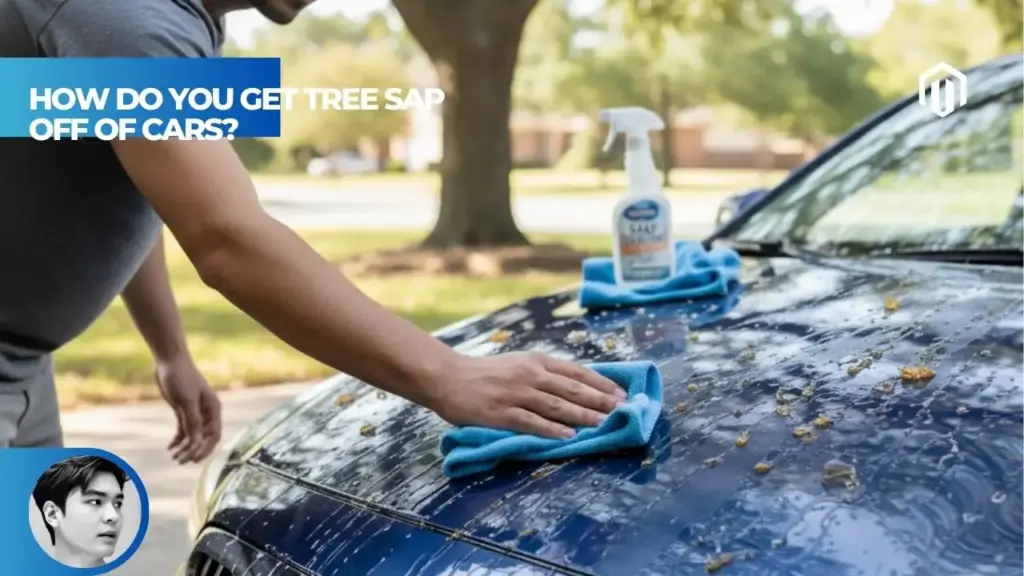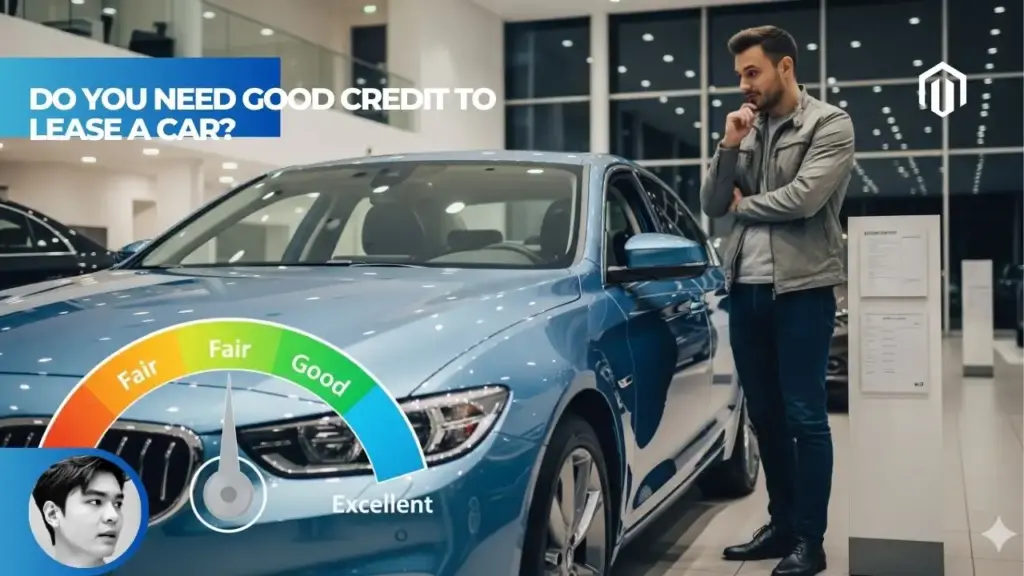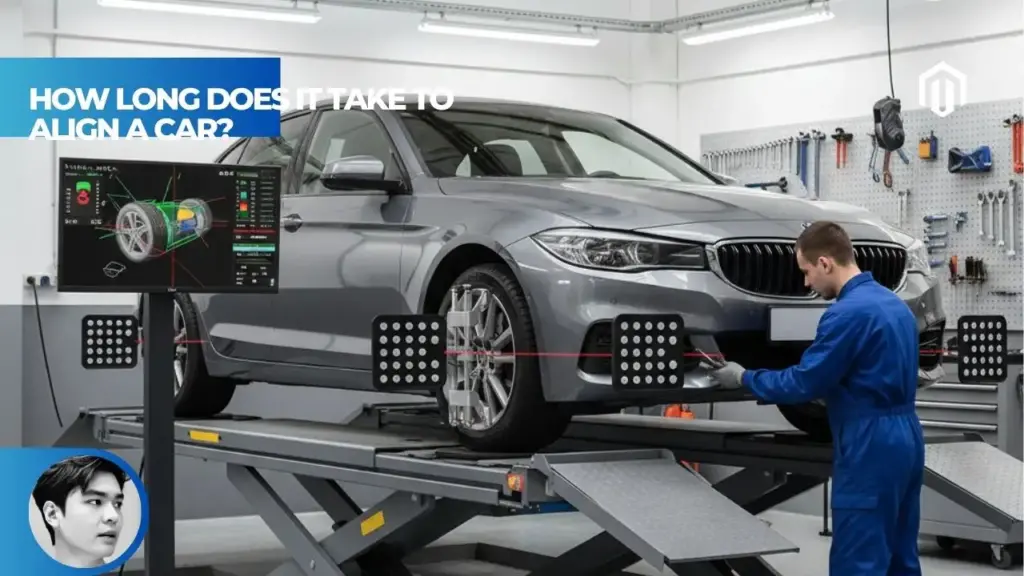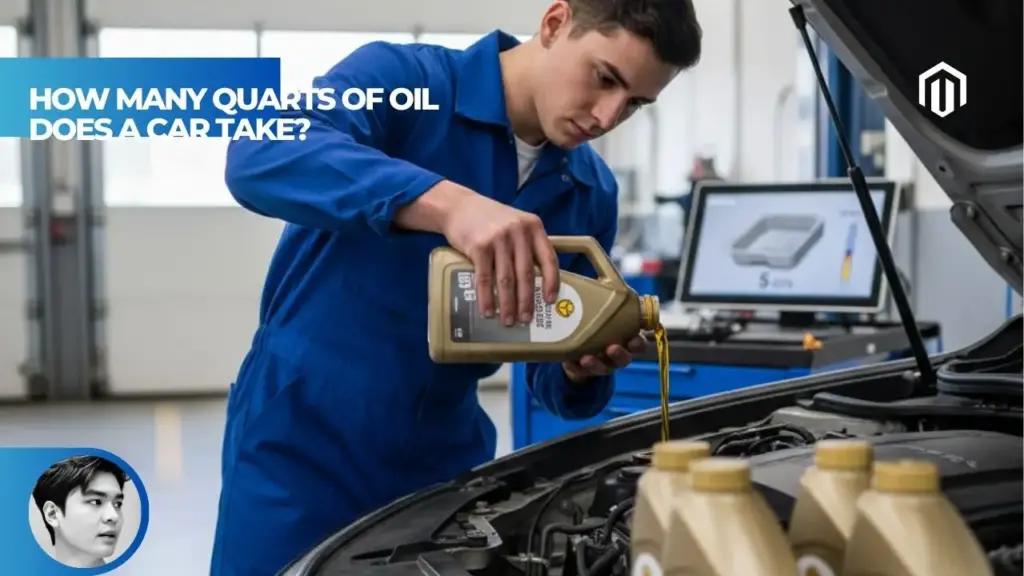You may also like:
- 【Explained】Can You Jumpstart a Car With a Bad Alternator?
- 【Explained】How Long Can a Car Sit Without Being Driven? The Dangers of Inactivity
- 【Explained】How Long Does It Take to Replace a Car Battery? (A Full Breakdown)
- 【Explained】When Does the 2-Hour Car Seat Rule End for Babies?
- 【Explained】Why Does My Audi Car Key’s Red Light Blink But the Car Does Not Open? (5 Fixes)
Yes, you can safely jump-start a car in the rain with proper precautions, as the 12-volt system poses minimal risk of serious electrocution—the real danger lies in potential short circuits from water bridging connections. Taking essential safety measures like drying battery terminals, using rubber gloves, and ensuring jumper cables are in good condition will protect both you and your vehicle’s electrical system from damage.
While the prospect of handling electrical connections in wet weather might seem dangerous, understanding the actual risks and following proven safety procedures makes this common roadside emergency manageable. The key lies in respecting electricity’s behavior around water while recognizing that your car’s 12-volt battery simply doesn’t carry enough voltage to cause fatal electrocution.
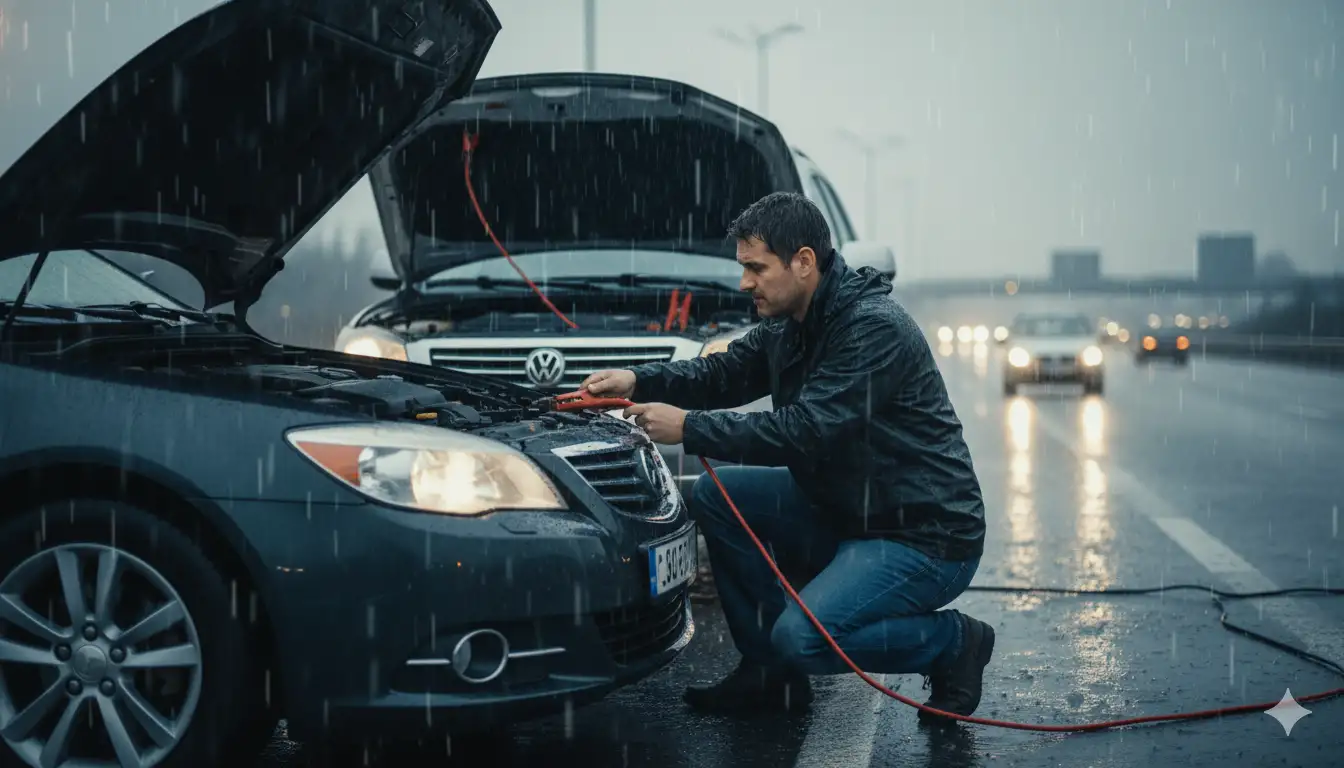
Is It Safe to Jump Start a Car in the Rain?
Understanding the 12-Volt System Safety
A car’s 12-volt electrical system operates at a voltage level that’s generally insufficient to cause serious electrocution, even in wet conditions[1]. The human body typically has a resistance of 1,000 to 10,000 ohms when wet, which limits the current from a 12-volt battery to approximately 12 milliamps—far below the 100-200 milliamp threshold considered potentially fatal.
This doesn’t mean the system is harmless. While you won’t suffer fatal electrocution, that 12 milliamp current can still cause painful sensations and involuntary muscle contractions. The real danger, however, comes not from the voltage itself but from the battery’s ability to deliver hundreds of amps when short-circuited.
According to Autvex automotive safety experts, the misconception about car battery danger often stems from confusion with household 110-240 volt systems. Your car battery operates at less than 5% of household voltage, making direct electrocution extremely unlikely even with wet hands.
Risk of Shock vs Risk of Short Circuit
The distinction between shock risk and short circuit danger is crucial for safe jump-starting in rain. Short circuits pose the primary hazard, potentially causing sparks, fires, and extensive damage to modern vehicles’ sensitive electronic control units (ECUs)[2].
When water creates conductive paths between positive and negative terminals or between cables and grounded metal surfaces, it can cause immediate short circuits. These shorts generate intense heat and sparks that can:
- Damage the battery internally
- Destroy alternators and ECUs worth thousands of dollars
- Ignite hydrogen gas naturally emitted by batteries
- Cause cable insulation to melt
The actual shock risk remains minimal. Even with completely wet hands in heavy rain, the 12-volt system might cause uncomfortable tingling or minor muscle spasms but won’t cause cardiac arrest or respiratory failure like high-voltage systems can.
When to Call Roadside Assistance Instead
Certain conditions make professional help the wiser choice over DIY jump-starting. Call roadside assistance when facing lightning, torrential rain, or damaged equipment[3].
| Condition | DIY Safe? | Recommended Action |
|---|---|---|
| Light drizzle | Yes | Proceed with caution |
| Steady rain | Yes | Use extra precautions |
| Heavy downpour | Maybe | Consider waiting |
| Lightning present | No | Call assistance immediately |
| Damaged cables | No | Replace before attempting |
| Frozen battery | No | Professional evaluation needed |
Professional services arrive equipped with weather-resistant equipment and experience handling adverse conditions. They carry industrial-grade cables, portable shelters, and diagnostic tools that can identify underlying problems beyond a simple dead battery.
Dangers of Jumping a Car in the Rain
Short Circuit Risks with Wet Conditions
Water’s conductivity creates multiple pathways for unintended electrical flow during jump-starting procedures. Even small amounts of moisture can bridge connections, causing shorts that damage both vehicles’ electrical systems[2].
The most vulnerable points include:
- Battery terminal connections where water pools
- Cable clamp joints with exposed metal
- Engine ground points collecting runoff
- Damaged cable insulation allowing water penetration
Short circuits occur instantly when water completes an unintended circuit path. A single drop bridging positive to negative can discharge hundreds of amps in milliseconds, generating extreme heat and potentially explosive hydrogen ignition. Modern BMW vehicles with complex electrical systems face particular vulnerability to voltage spikes from shorts.
Can Rain Cause Damage to Vehicle Electronics (ECU)?
Modern vehicles contain dozens of electronic control modules managing everything from engine timing to airbag deployment. Water-induced electrical surges during jump-starting can damage these sensitive components, potentially causing thousands in repair costs[4].
The ECU (Engine Control Unit) proves especially vulnerable because it directly connects to the battery and alternator systems. Voltage spikes from improper jump-starting or water-caused shorts can overwhelm the ECU’s protective circuits, leading to:
- Corrupted programming requiring reflashing
- Burned circuit boards needing replacement
- Sensor communication failures
- Permanent module damage
European vehicles like Audi models often feature multiple interconnected control modules, meaning damage to one component can cascade through the entire network. Water infiltration during jump-starting has been documented causing $3,000-5,000 in electronic repairs.
What Happens If Jumper Cables Get Wet?
Wet jumper cables themselves aren’t inherently dangerous if the insulation remains intact—the concern arises when water creates conductive bridges between clamps or exposed wiring[5]. Quality cables feature thick rubber or PVC insulation specifically designed to resist moisture penetration.
However, aging or damaged cables present serious hazards when wet:
- Cracked insulation allows water to reach copper conductors
- Corroded clamps provide poor connections prone to arcing
- Worn handles lose their insulating properties
- Exposed wires create multiple short circuit points
Professional-grade cables with intact insulation can handle rain exposure, but consumer-grade cables often develop microscopic cracks over time. These imperfections become dangerous conductors when wet, potentially causing cables to arc between themselves or to nearby metal surfaces.
Safety Precautions for Jumping a Car in Wet Weather
Essential Safety Gear: Rubber Gloves and Protection
Proper protective equipment transforms a risky situation into a manageable task. Rubber gloves rated for electrical work provide crucial insulation while maintaining the grip needed for secure cable connections[3].
Essential safety gear includes:
- Electrical-rated rubber gloves: Not gardening gloves or latex
- Safety glasses: Protection from potential sparks
- Water-resistant clothing: Reduces overall conductivity
- Non-slip footwear: Prevents accidents on wet surfaces
- Flashlight or headlamp: Ensures proper visibility
The gloves serve dual purposes—insulation from electrical current and improved grip on wet cable handles. Wet bare hands can slip at critical moments, potentially causing clamps to touch and create shorts. Quality electrical gloves cost $15-30 but prevent both injury and costly mistakes.
Checking Your Jumper Cables Condition
Before attempting any jump-start, especially in rain, thorough cable inspection is mandatory. Look for cracks, exposed copper, or corrosion that could create hazardous conditions when wet[5].
Inspection checklist:
- Run hands along entire cable length feeling for cuts
- Flex cables to reveal hidden cracks in insulation
- Examine clamp teeth for corrosion or damage
- Check handle insulation integrity
- Verify clamp springs maintain proper tension
- Look for previous heat damage or melting
Any visible copper wire or damaged insulation disqualifies cables for wet weather use. Even tiny exposed sections become dangerous when water creates conductive paths. Professional shops replace cables showing any wear rather than risk customer safety or vehicle damage.
Drying Battery Terminals Before Connection
Water accumulation on battery terminals creates immediate short circuit risk during cable connection. Use a clean, dry cloth to thoroughly wipe terminals and surrounding areas before beginning[2].
According to Autvex technicians, the drying process should include:
- Remove standing water from battery top
- Wipe terminal posts until completely dry
- Clear water from battery hold-down brackets
- Dry the area around ground connection points
- Check for corrosion that might trap moisture
Paper towels or microfiber cloths work best for absorbing water without leaving residue. Avoid using compressed air which can force water into electrical connections. If terminals show heavy corrosion, the white or green buildup must be cleaned first as it absorbs and retains moisture.
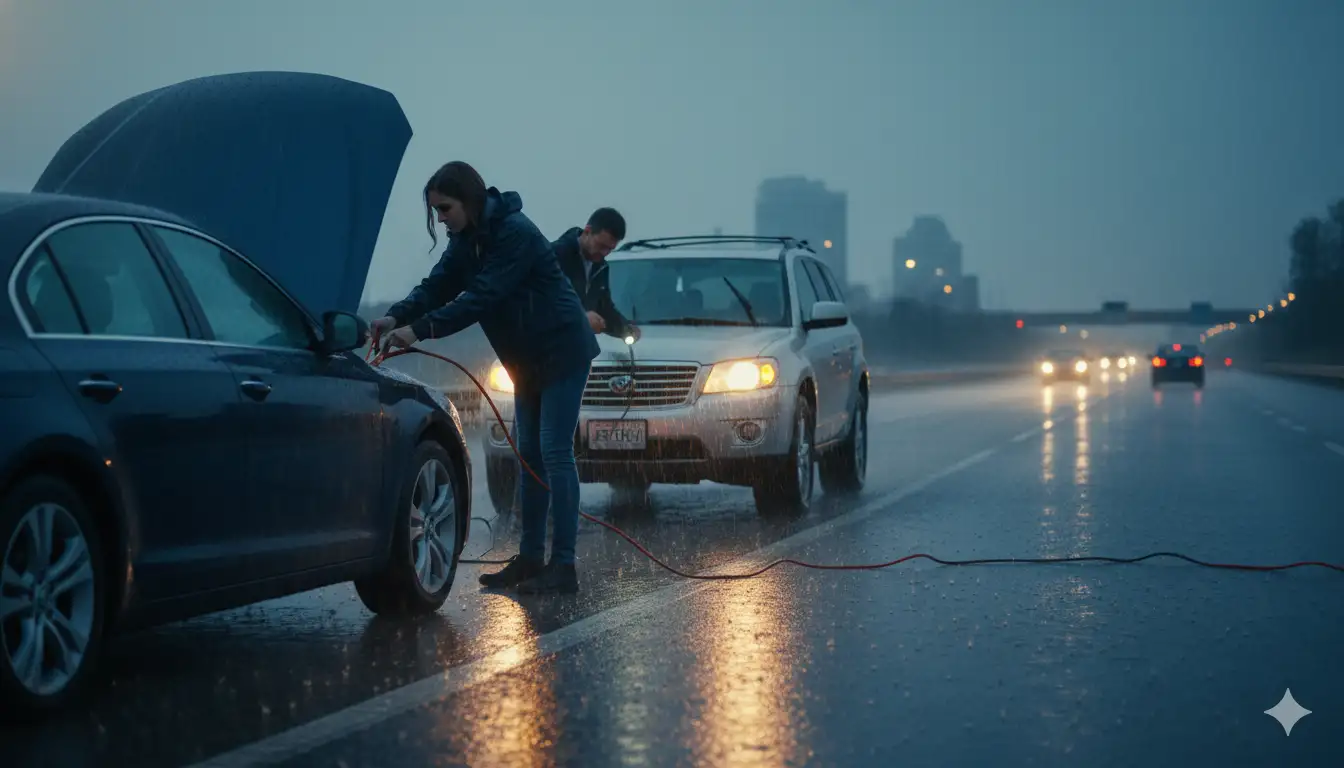
Step-by-Step Guide: How to Safely Jump Start in the Rain
Positioning Both Cars Correctly
Proper vehicle positioning sets the foundation for safe jump-starting, especially crucial in wet conditions. Park vehicles close enough for cables to reach comfortably without stretching, but far enough to prevent accidental contact[6].
Optimal positioning requires:
- 2-3 feet between vehicles minimum
- Batteries facing each other when possible
- Level ground to prevent rolling
- Both vehicles in Park (automatic) or Neutral with parking brakes engaged
- Engines off with keys removed
- Hazard lights activated for visibility
Avoid positioning where water runs off one vehicle onto the other’s engine bay. If possible, angle vehicles to create natural water runoff away from battery areas. Never attempt jump-starting with vehicles touching—metal-to-metal contact can create unintended ground paths.
Correct Order to Connect Jumper Cables in Rain
The connection sequence becomes even more critical in wet conditions where mistakes cause immediate consequences. Follow this exact order to minimize exposure time and short circuit risk[4]:
- Red to dead positive: Connect red clamp to dead battery’s positive (+) terminal
- Red to donor positive: Attach other red clamp to good battery’s positive terminal
- Black to donor negative: Connect black clamp to good battery’s negative (-) terminal
- Black to ground: Attach final black to unpainted metal on dead car’s engine block
This sequence keeps the final connection away from the battery, reducing spark risk near potentially explosive hydrogen gas. In rain, work quickly but deliberately—rushing increases error probability while slow work extends terminal exposure to water.
Grounding to Unpainted Metal Surface
The final ground connection proves most critical for safety, particularly in wet conditions. Never connect the final clamp directly to the dead battery’s negative terminal—this creates sparks exactly where hydrogen gas accumulates[7].
Suitable ground points include:
- Engine block bolts (unpainted)
- Alternator mounting brackets
- Sturdy chassis components
- Factory-designated jump points
- Metal strut towers
The ground point must be clean, unpainted metal with solid connection to the vehicle’s electrical system. Paint acts as an insulator, preventing proper current flow. In rain, ensure the ground point is as dry as possible before connection to prevent arcing.
The Jump-Starting Process in Wet Conditions
Connecting Positive and Negative Terminals
With safety preparations complete, the actual connection process requires steady hands and careful attention. Make connections firmly but avoid forcing clamps, which might slip on wet terminals[5].
Connection best practices:
- Squeeze clamps fully before approaching terminals
- Make positive connections first (less spark risk)
- Ensure clamp teeth bite into terminal metal
- Keep red and black cables separated
- Never let clamps touch each other or vehicle body
- Work with one hand when possible
Wet terminals can be slippery, making secure connections challenging. If clamps won’t grip properly, disconnect everything and re-dry terminals rather than accepting marginal connections that might arc or disconnect during starting attempts.
Starting the Working Car First
Once all connections are secure, the donor vehicle must run to begin charging the dead battery. Start the donor car and let it run for 2-3 minutes at slightly elevated idle (1,500 RPM) before attempting to start the dead vehicle[3].
This waiting period serves multiple purposes:
- Allows initial charge transfer to dead battery
- Stabilizes electrical system voltages
- Reveals any connection problems before load
- Reduces strain on donor vehicle’s alternator
During this time, monitor for unusual sounds, smells, or visible issues. Any sparking, smoking, or excessive heat indicates immediate disconnection is necessary. Dashboard warning lights on the donor vehicle suggest electrical problems requiring professional diagnosis.
Disconnecting Cables in Reverse Order
After successful jump-starting, removal follows the reverse sequence of installation. This reverse order prevents sparks and maintains safety throughout disconnection[4]:
- Remove ground: Disconnect black clamp from engine ground
- Remove donor negative: Take black from donor battery negative
- Remove donor positive: Disconnect red from donor battery positive
- Remove dead positive: Finally remove red from previously dead battery
Work deliberately despite success excitement—accidents often occur during cleanup when attention wavers. Keep the revived vehicle running during disconnection to maintain charge. Store wet cables separately from other tools until they can be properly dried to prevent corrosion.
Alternative Options: Portable Jump Starters in the Rain
Using a Portable Jump Starter vs Jumper Cables
Portable jump starters offer significant advantages over traditional cables in wet weather. These self-contained units eliminate the need for a second vehicle and reduce connection points where water might cause problems[8].
| Feature | Portable Starter | Jumper Cables |
|---|---|---|
| Second vehicle needed | No | Yes |
| Connection points | 2 | 4 |
| Weather resistance | Often IP65 rated | Depends on quality |
| Spark risk | Lower | Higher |
| Convenience | High | Moderate |
| Initial cost | $50-150 | $15-40 |
Modern lithium-ion jump starters pack impressive power into compact packages. Units capable of starting V8 engines fit in glove compartments, making them ideal emergency equipment. The reduced connection points and shorter cables minimize rain exposure during use.
Best Waterproof Jump Starter Features
Quality portable starters designed for wet conditions include specific protective features. Look for IP65 or higher ratings, which guarantee protection against water jets from any direction[8].
Essential waterproof features:
- IP65+ rating: Dust-tight and water-jet resistant
- Sealed ports: Rubber covers for USB and cable connections
- Rubberized casing: Shock absorption and grip
- Spark-proof technology: Prevents shorts if clamps touch
- Reverse polarity protection: Prevents damage from wrong connections
- Temperature management: Operates in extreme conditions
Top-rated units from manufacturers like NOCO and Lokithor specifically engineer their products for emergency use in adverse conditions. The Autvex equipment reviews consistently rank IP65-rated models highest for reliability.
Battery Pack Safety in Wet Conditions
Lithium-ion jump starters require specific handling considerations in wet weather. Never attempt to jump-start if the unit shows any damage or has been submerged in water[9].
Safety protocols for portable units:
- Store in dry location until needed
- Check charge level before rain exposure
- Close all ports securely after use
- Never charge the unit while wet
- Allow to fully dry before storage
- Replace if exposed to saltwater
Despite waterproof ratings, these devices contain high-energy lithium cells that can become dangerous if water penetrates the casing. Professional-grade units include multiple safety circuits preventing thermal runaway, but consumer vigilance remains essential for safe operation.
What NOT to Do When Jumping a Car in the Rain
Avoiding Sparks Near the Battery
Batteries naturally emit hydrogen gas during normal operation, creating an explosive atmosphere around terminals. Any spark near the battery can ignite this invisible gas, causing explosion and acid spray[7].
Spark prevention requires:
- Never connect final cable to dead battery negative
- Keep metal tools away from terminals
- Remove jewelry that might contact terminals
- Don’t smoke or use open flames
- Avoid creating static electricity
- Work in well-ventilated areas
Real-world example: A 2023 insurance claim documented $4,500 in damage when improper connection sequence created sparks, igniting hydrogen and splitting the battery case. The resulting acid spray damaged paint, requiring hood and fender refinishing beyond battery replacement.
Never Jump Start During Lightning
Lightning presents non-negotiable danger during jump-start attempts. The metal vehicles and cables create lightning rods, potentially directing strikes through anyone handling connections[2].
Lightning safety facts:
- Strikes can occur 10 miles from storm centers
- “Bolt from the blue” strikes happen in clear skies
- Thunder means lightning is within striking distance
- Vehicles offer protection only when fully enclosed
- Metal objects increase strike probability
- No warning precedes most strikes
If thunder is audible, cease all jump-start attempts immediately. The inconvenience of waiting or calling assistance pales compared to lightning strike consequences. Professional towing services suspend operations during electrical storms for this exact reason.
Common Mistakes That Cause Short Circuits
Understanding frequent errors helps prevent costly damage during wet-weather jump-starts. The most dangerous mistakes involve cable positioning and connection sequence violations[6].
Critical mistakes to avoid:
- Crossing cables: Red and black touching creates dead short
- Touching clamps together: Instant short circuit and sparks
- Wrong polarity: Positive to negative causes immediate damage
- Loose connections: Arcing under load damages terminals
- Wet hands on terminals: Increases conductivity unnecessarily
- Rushing the process: Haste leads to expensive errors
Insurance data shows improper jump-starting causes over $50 million in vehicle damage annually. Most incidents involve simple procedural errors entirely preventable through careful attention. Professional service costs far less than ECU replacement.
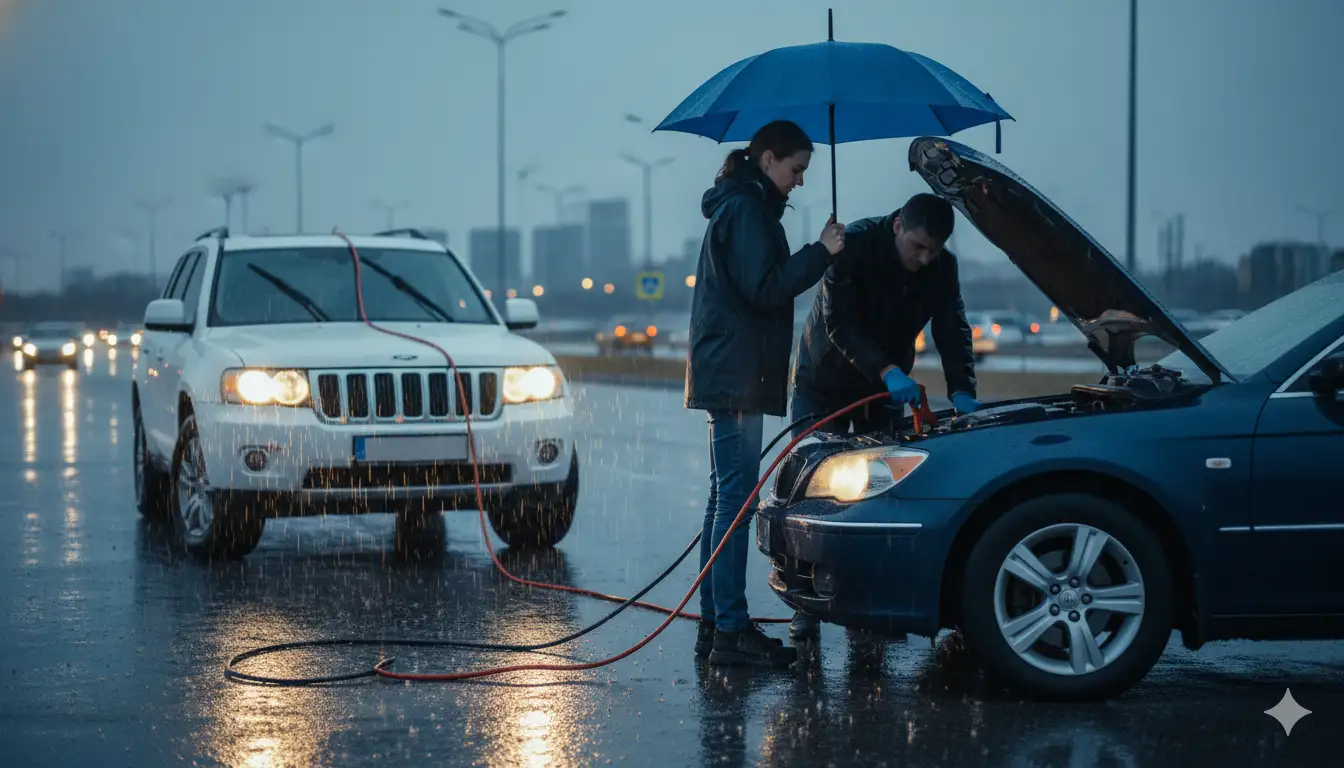
Key Takeaways
- 12-volt systems won’t cause fatal electrocution but can create painful shocks and dangerous shorts
- Short circuits pose the greatest risk, potentially damaging expensive electronics
- Proper safety gear is essential: rubber gloves, safety glasses, and dry conditions
- Cable condition matters critically in rain—any damage disqualifies use
- Connection order prevents sparks: positive first, ground last and away from battery
- Portable jump starters offer safer alternatives with IP65 ratings for wet conditions
- Never attempt during lightning regardless of urgency—call professional help
Next Steps
Assess your current situation objectively before proceeding. If you’re facing light rain with quality equipment and feel confident in the procedure, gather your safety gear—rubber gloves, safety glasses, and dry towels. Take time to thoroughly dry the battery terminals and verify your jumper cables show no damage or exposed wiring. Position vehicles properly and follow the connection sequence exactly: red to dead positive, red to donor positive, black to donor negative, black to suitable ground away from the battery.
For those uncomfortable with the risk or lacking proper equipment, calling roadside assistance remains the wisest choice. Most insurance policies include emergency roadside service, and standalone memberships through AAA or similar services cost less than potential repair bills from mistakes. Professional technicians arrive with weather-appropriate equipment and experience handling adverse conditions safely.
Consider investing in a quality portable jump starter with IP65 or better waterproof rating for future emergencies. These devices eliminate the need for second vehicles and reduce connection complexity significantly. Modern battery technology makes these units compact enough for glove compartment storage while powerful enough for multiple jump-starts. Whatever path you choose, prioritize safety over speed—your wellbeing and vehicle’s electrical system depend on careful, methodical execution regardless of weather conditions.
Frequently Asked Questions
Is it dangerous to jump-start a car in the rain?
While there’s minimal electrocution risk from a 12-volt battery even when wet, rain increases the danger of short circuits if water bridges electrical connections. With proper precautions like dry terminals, intact cables, and rubber gloves, the process remains manageable and safe.
Can you get electrocuted from jumping a car in the rain?
No, a 12-volt car battery doesn’t have sufficient voltage to cause fatal electrocution, even with wet hands. The maximum current through wet human skin is approximately 12 milliamps—uncomfortable but not life-threatening compared to the 100-200 milliamps needed for serious injury.
What happens if jumper cables get wet?
Wet cables themselves aren’t dangerous if the insulation remains intact and undamaged. The real concern arises when water creates conductive paths between terminals, clamps, or exposed wiring, potentially causing short circuits that damage vehicle electronics.
What are the safety precautions for jumping a car in wet weather?
Essential precautions include wearing rubber gloves for insulation, ensuring cables have no damaged insulation, thoroughly drying battery terminals before connection, keeping clamps from touching each other, and grounding to unpainted metal away from the battery.
What is the biggest risk when jump-starting a car in the rain?
Short circuits represent the primary danger, occurring when water bridges positive and negative connections or creates unintended ground paths. These shorts can generate dangerous sparks, damage expensive electronic control units, and potentially cause battery explosion.
Can rain cause a short circuit when jumping a car?
Yes, water conducts electricity and can create paths between terminals or clamps, causing immediate short circuits. These shorts produce intense heat and sparks that can damage both vehicles’ electrical systems and potentially ignite hydrogen gas from batteries.
Is it safe to use a portable jump starter in the rain?
Portable jump starters are generally safer than traditional cables in rain, especially models with IP65 or higher waterproof ratings. They reduce connection points and eliminate the need for a second vehicle, minimizing exposure time and potential error points.
Should you wear gloves when jumping a car in the rain?
Yes, electrical-rated rubber gloves are essential for protection against shock and maintaining secure grip on wet cables. Regular cloth or gardening gloves don’t provide adequate insulation—only proper electrical gloves prevent current flow while handling connections.
What should you NOT do when jumping a car in the rain?
Never attempt jump-starting during lightning storms, don’t allow clamps to touch each other or vehicle body, avoid standing in puddles while making connections, never use damaged cables with exposed wiring, and don’t rush the process which increases error likelihood.
Can jumping a car in the rain damage the battery or ECU?
Yes, if water causes short circuits or improper connections create voltage spikes, both the battery and sensitive electronic control units can suffer permanent damage. Modern vehicles’ ECUs are particularly vulnerable to electrical surges, potentially resulting in thousands of dollars in repairs.
Is it better to call roadside assistance if it’s raining?
In heavy rain or lightning conditions, professional roadside assistance is definitively safer. They arrive with proper weather-resistant equipment and experience handling adverse conditions, reducing risk of personal injury or costly vehicle damage.
Can you jump a car if there is lightning?
No, never attempt to jump-start during lightning storms under any circumstances. The metal vehicles and cables significantly increase lightning strike risk, creating potentially fatal conditions for anyone handling the connections.
Does the order of jumper cables matter more in the rain?
Yes, proper connection sequence becomes even more crucial in rain to minimize the time terminals remain exposed to water and reduce short circuit risk. Following the correct order—positive connections first, ground connection last and away from battery—prevents dangerous sparks near hydrogen gas.
References
- Electrical Technology. (2025). Why Can’t a 12V Car Battery Electrocute You? https://www.electricaltechnology.org/2022/09/car-12v-battery-electrocute.html
- Gerry Lane CDJR. (2025). Can You Safely Jump Start a Car in the Rain? https://www.gerrylanecdjr.com/blog/2025/august/18/can-you-safely-jump-start-a-car-in-the-rain.htm
- Crate Club. (2025). Can You Jump Start a Car in Rain? A Comprehensive Guide. https://crateclub.com/blogs/loadout/can-you-jump-start-a-car-in-rain-a-comprehensive-guide-to-safe-practices
- CarParts.com. (2024). Can You Jump a Car in the Rain? https://www.carparts.com/blog/can-you-jump-a-car-in-the-rain/
- Car From Japan. (2023). Is It Safe To Jump A Car In The Rain? https://carfromjapan.com/article/is-it-safe-to-jump-a-car-in-the-rain/
- Car and Driver. (2024). How to Jump Start Your Car In 5 Easy Steps. https://www.caranddriver.com/features/a26801962/how-to-jump-start-car/
- AutoZone. (2025). Can You Jump a Car in the Rain? https://www.autozone.com/diy/battery/battery-charging/can-you-jump-a-car-in-the-rain
- Car-KU. (2025). Carku 12V Jump Starter JS-535. https://www.car-ku.com/products/Carku-12V-Jump-Starter-JS-535.html
- TechGearLab. (2025). The Best Jump Starters of 2025. https://www.techgearlab.com/topics/tools/best-jump-starter

I am a senior automotive analyst at Autvex. Expert vehicle evaluations, in-depth reviews, and objective analysis helping readers make informed automotive decisions with years of industry experience.

